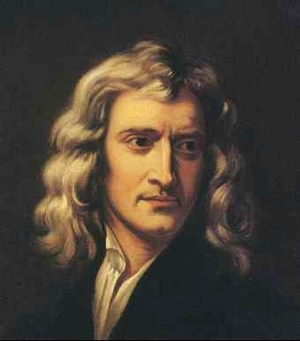|

Isaac Newton (pictured at left), after seriously considering both wave and particle models of light, ultimately decided that light was made up of particles (corpuscles). Proponents of the particle theory of light pointed to reflection as evidence that light consists of individual particles that bounce off of objects, much like billiard balls. Newton believed that refraction could also be explained by his laws of motion. As light particles approached the boundary between two materials of different densities, such as air and water, the increased gravitational force of the denser material would cause the particles to change direction.
Newton's particle theory was also based partly on his observations of how the wave phenomenon of diffraction related to sound. He understood that sound traveled through the air in waves, meaning sound could travel around corners and obstacles. In this way a person in another room can be heard through a doorway. Since, at the time, there was no experimental evidence of light diffraction, it was thought that light was unable to bend around corners or obstacles. Thus, Newton believed that light could not diffract. He therefore supposed light was not a wave.
|